Recognition
Peer Recognition is more than a pat on the back

For weeks altogether, we have been regularly uploading blogs on the website. Through these blogs, we have been trying to increase awareness about peer recognition and how a well-implemented peer recognition program will serve to be your biggest strength in building an organization that exemplifies good ethics, a positive work culture, and a boost in results.
However, this week, we wish to stray away from the usual format of the blog. On this blog, we wish to have a dialogue with all our readers. PeerFives is very well aware that we live in a truly digital age where our co-workers are miles away, and emulating the physical aspect of commending good work must be replicated digitally. However, here’s where we want to emphasize that peer recognition is more than just a virtual pat on the back.
Using this blog as a medium, we wish to highlight how peer recognition is a real game changer, and it isn’t “corporate mumbo-jumbo” as often termed by critics and naysayers. But before we delve right into it, let us understand the history of peer recognition.
Until the past decade, peer recognition was unidimensional. A top to bottom approach to recognition at organizations worked effectively but had far too many pitfalls. Decision makers and management teams were highly disconnected from employees and often solely looked at performance metrics to reward individuals. The entire human aspect behind making anything a success was completely ignored, and individual recognition led to unhealthy competition within teams.
Unidimensional Peer Recognition
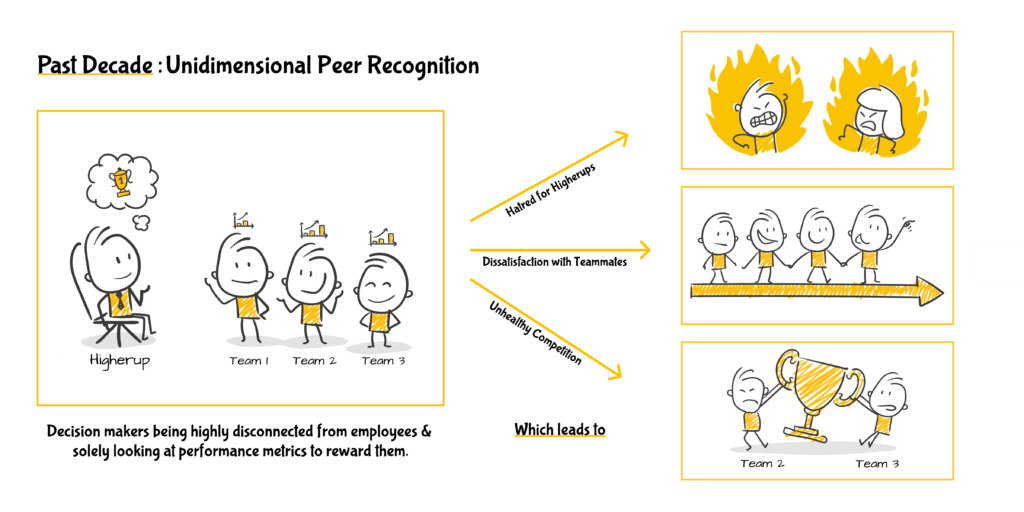
Did this imply that the employees were in any way unhappy with their jobs? No! In most cases, employees were happy with their jobs, they were even committed to the greater goal of the organization, and they were loyal enough to recommend others to be part of the organization. However, they exhibited signs of dissatisfaction with their teammates. Some even had a hidden hatred for their immediate higher-ups, and not addressing these issues was a major roadblock to having a truly positive workplace.
By simply making recognition multidirectional rather than unidirectional, we can achieve a lot more. Making recognition multidirectional helps overcome the tendency to only recognize individuals based on the outcome. Individuals are empowered to commend good work done by their peers and the insight they have into each other’s lives, personal and professional both. This helps them transform peer recognition into a tool that can be used to recognize work done & effort put in to highlight results or use peer recognition as a means to motivate peers who have been going through a rough patch and simply need the reassurance to be at their best once again.
Multidimensional Peer Recognition
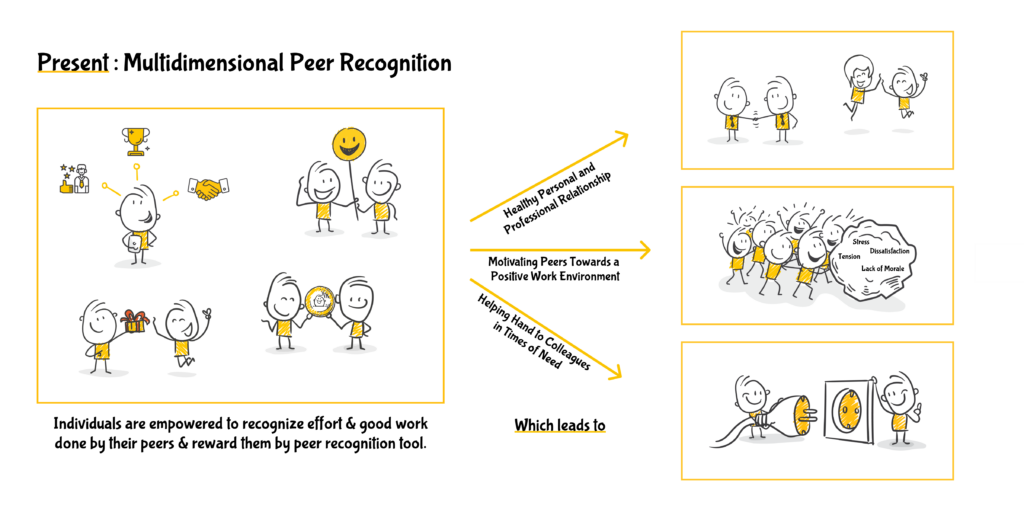
Here, it is evident that peer recognition is not just a pat on the back, a “bravo!” or a “well done.” Peer recognition can also be a helping hand to colleagues in times of need, and peer recognition can serve to be the catalyst that helps uplift peers.
With not enough people being familiar with the concept in many parts across the globe, there is a tendency to oversimplify the entire process of peer recognition. Peer recognition is now an umbrella term that has flexible boundaries. Peer recognition brings together recognition, rewards, and engagement under one roof to promote better interpersonal relationships and enhanced performance metrics.
Reward Recognition
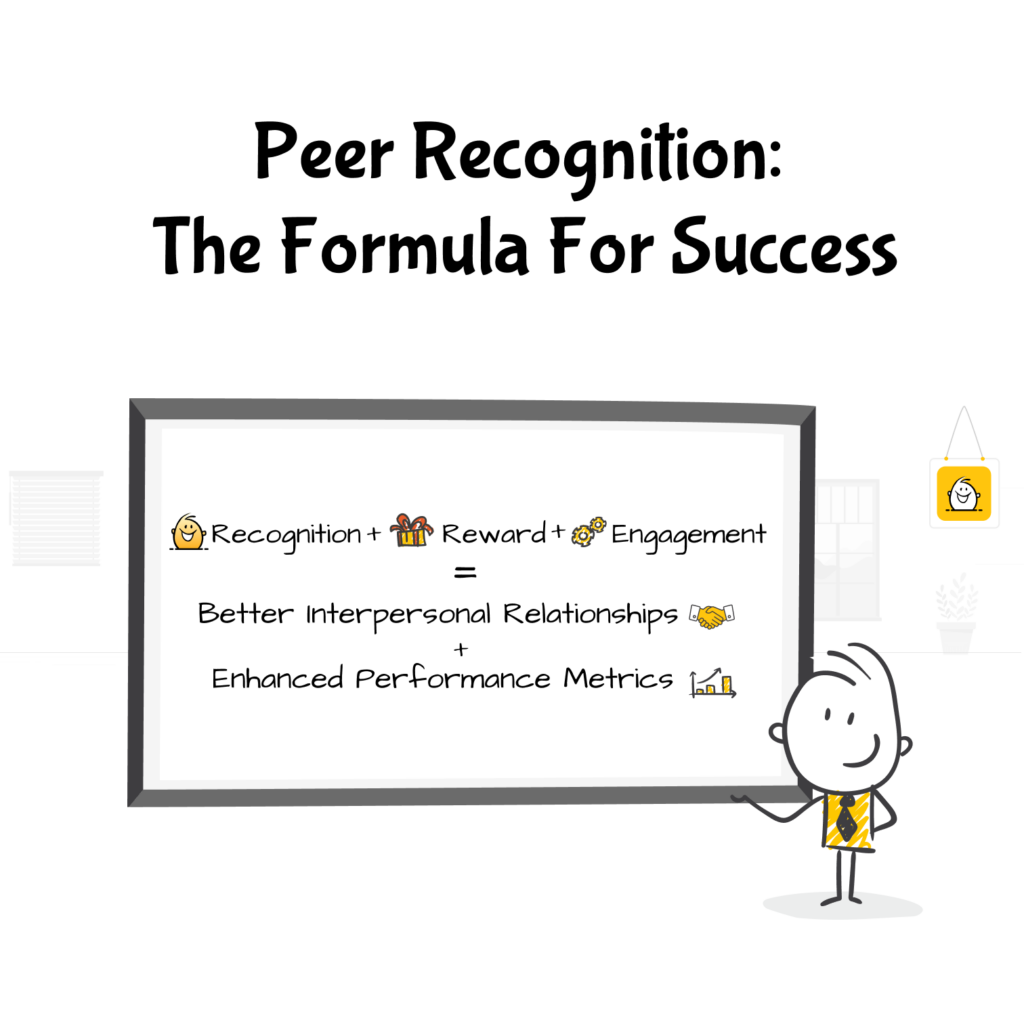
If you are a large enterprise, you are certainly no stranger to peer recognition programs. And we’re sure the only reason you are looking at PeerFives is to choose a comprehensive peer recognition tool that assists your organization in automating the whole recognition & rewarding process as far as possible.
However, if you are an MSME, then you might want to consider implementing a highly focused peer recognition program to truly unlock the full potential of your team. And there is a reason why this is our catchphrase, and we don’t just wish to sell you our product. We have been there, and we know the pain entrepreneurs need to take while building an organization. We’ve seen those days when we wished that we had access to a tool that took care of peer-to-peer recognition for us within the organization itself.
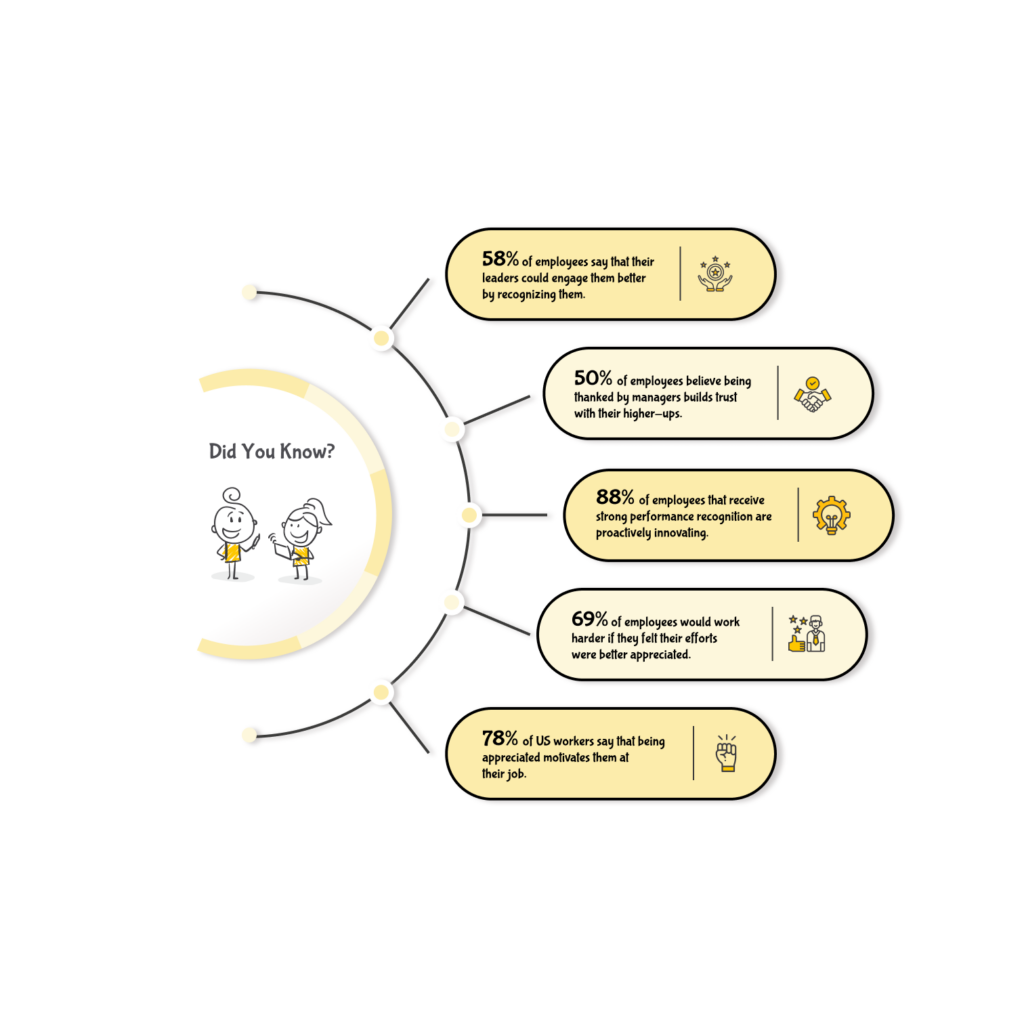
Our readers, who are well versed in the world of technology, must be aware of the story behind the birth of Slack. The team behind Slack, the insanely popular workplace communication tool, was originally looking to spearhead innovation in the massively multiplayer online role-playing game (MMORPG) market. The company was called Tiny Speck, and they built a SaaS-based product to cater to the organization’s internal communication needs. Only to realize the potential of the product down the line.
Our Goal
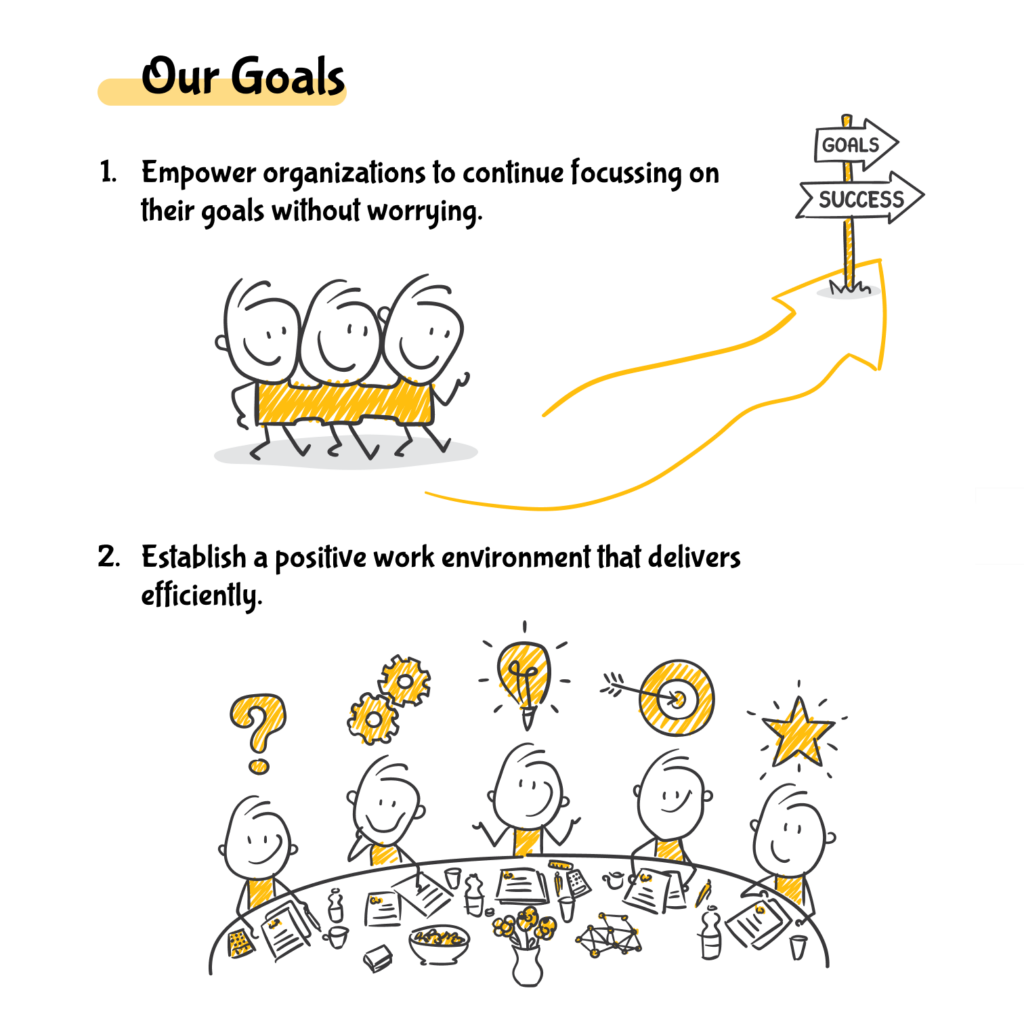
Taking a leaf out of Slack’s book, the team behind PeerFives devoted itself to building a multifunctional peer recognition tool while finding solutions to the various complex digital challenges that organizations face across the globe. Our goal is to empower organizations to continue focussing on their goals without worrying about the nitty-gritty to establish a positive work environment that delivers efficiently. Don’t just take our word for it; go ahead, make the most of our free 30-day trial and schedule a demo to experience the product yourself before committing to it!

